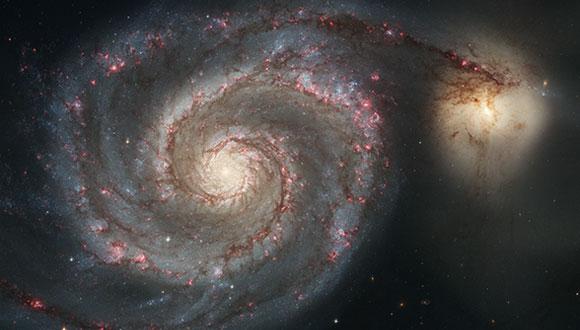Special Astronomy & Astrophysics Seminar: JWST and high-redshift observations
Rogier A. Windhorst, JWST Interdisciplinary Scientist, Arizona State University
TITLE: "Hubble Space Telescope Observations of Escaping Lyman Continuum Radiation from Galaxies and Weak AGN at Redshifts 2.3<z<5: (How) Did they Reionize the Universe?''
Co-I's: Brent Smith, Seth H. Cohen, Rolf A. Jansen, Linhua Jiang, Mark Dijkstra, Akio Inoue, Anton M. Koekemoer, Richard, Bielby, John W. MacKenty, Robert W. O'Connell, Joseph I. Silk
Abstract:
We present observations of the Lyman Continuum (LyC) radiation that may be escaping from galaxies and weak AGN with reliably measured spectroscopic redshifts at z=~2.3--5. For this, we analyzed reprocessed Hubble Space Telescope (HST) Wide Field Camera 3 (WFC3) and Advanced Camera for Surveys (ACS) mosaics of the Early Release Science (ERS) field in four filters that sample LyC over this redshift range.
With our best current assessment of the WFC3 and ACS systematics, we find that the LyC emission of faint galaxies at <z> ~= 2.37, 2.67, 3.50, and ~5.1 is generally detected at the >3--4-sigma level, in typical image stacks of 11--37 objects in the WFC3/UVIS F225W, F275W, F336W, and ACS/WFC F435W filters, respectively. Their measured signal corresponds to total LyC fluxes of AB~29--31 mag. The LyC flux of weak AGN is detected at ~1 mag brighter levels at z~=2.3--4.8, but averaged over 4--10x fewer objects per stack. The stacked galaxy LyC light-profiles are much flatter than their UV-continuum profiles at radii r=<0.7". Their weighted-average LyC light-profile is significantly non-centrally concentrated over this redshift range, which may be explained by a radial dependence in the ISM porosity at 2.3 < z < 5.
With SED-fitting of the UV-continuum longwards of Lya, the observed LyC flux corresponds to an average LyC escape fraction of f_esc=7--50% at z=2.3--3.5, while increasing to possibly ~100% at z>4.35. The available data for galaxies are bounded by a trend with redshift of f_esc = (0.02 +/- 0.01) x (1+z)^{1.0+/-0.5}. However, a better description seems to be a more sudden increase in f_esc with redshift that occurred around z = 2.9, which we suggest is due to dust accumulating in galaxies as they grow with cosmic time. Our best fits of f_esc(z) suggest that faint galaxies collectively may have measurably contributed to maintaining cosmic reionization at redshifts z>3--5, while (weak) AGN likely produced a significant fraction of the ionizing LyC flux at z ~< 2.5. Complete reionization at z<6--7 may be further enabled by a steep faint-end of the galaxy luminosity function at higher redshifts, integration to very faint luminosities (M_AB = -14 mag), and possibly also that f_esc increases at fainter luminosities and lower metallicities at higher redshifts than can be sampled with the current data.
Seminar Organizer: Prof. Rennan Barkana


